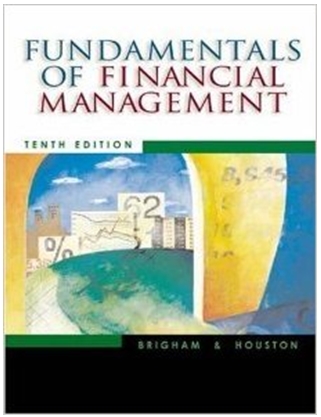Question
1. Behavorial finance suggests that: a. investors are not informed b. individuals make rational investment decisions c . investors may be subject to bias which
1. Behavorial finance suggests that: a. investors are not informed b. individuals make rational investment decisions c. investors may be subject to bias which leads to excessive buying or selling stocks d. emtion plays only a minor role in security selection 2. Preferred stok and long-term bonds are similar becuase: a. they both have voting power b. interest and dividend payments are fixed c. interest and dividend payments are legal obligations d. interest and dividend payments are tax-deductible expenses 3. Days sales outstanding (the average collection period) measures: a. the speed with which accounts payable are paid b. the speed with which receivable are collected c. the saftey of accounts receivable d. the safety of accounts payable 4. Which of the following is not used in technical analysis?: a. moving averages b. bar graphs c. point-and-figure charts d. P/E ratios 5. The cirrent ratio is unaffected by: a. using cash to retire an account payable b. the collection of an receivable c. selling inventory for a profit d. selling bonds and using the funds to finance inventory 6. The technical approach suggests that future stock prices are forecasted by: a. past stock prices b. financial ratios c. accounting statements d. monetary policy 7. Which of the following is a fundamental principle of behavior finance? a. the use of p/E ratios b. the tendency to aviod acknowledging investment errors c. selling stocks at a loss for tax purposes d. constructing a diversified portfolio 8. Which of the following is a cash outflow: a. splitting the stock two for one b. acquiring inventory c. retaining earnings d. switching from straight-line depreciation to accelerated depreciation is 9. If the required rate of return is 10 percent and stock pays a fixed $5 dividend, its value : a. $100 b. $75 c. $50 d. $25 10. the return on equity: a. is the ratio of sales to equity b. measures what the firm earns on assets c. is the ratio of net income to total equity d. measures what the firm earns on sales 11. which of the following occurs when a stock is split two-for-one: a. the price of the stock doubles b. the firm's assets increase c. the firm's liabilities decrease d. the par value of the stock is reduced 12. which of the following is a cash inflow?: a. distributing a stock dividend b. retiring an account payable c. ceollecting an account receiable d. paying property taxes 13. Empirical evidence: a. does not support efficient markets b. does not support the use of technical analysis c. cannot be applied to techincal analysis d. only supports head-and-figure charts 14. If a moving average of the Dow Jones industrial average crosses the Dow Jones industrial average: a. the direction of security prices has changed b. stock prices will stablize c. stock prices will go through a period of fluctuation d. the investor should take profits 15. the moving average convergence divergence indicator uses: a. the difference in yields on stocks and bonds b. the difference in yields between high and low quality stocks c. the difference in a short-term movin average and a longer term moving average d. the difference in the number of shares sold short and the number purchased. 16. Which of the following has no impact on cash flow? a. the firms equity b. depreciation expense c. taxes paid d. net income 17. Pre-emptive rights permit stockholder to: a. collect dividends before they are invested b. participate in dividend reinvestment plans c. maintain the proportionate share of ownership d. vote their shares
Step by Step Solution
There are 3 Steps involved in it
Step: 1

Get Instant Access to Expert-Tailored Solutions
See step-by-step solutions with expert insights and AI powered tools for academic success
Step: 2

Step: 3

Ace Your Homework with AI
Get the answers you need in no time with our AI-driven, step-by-step assistance
Get Started


